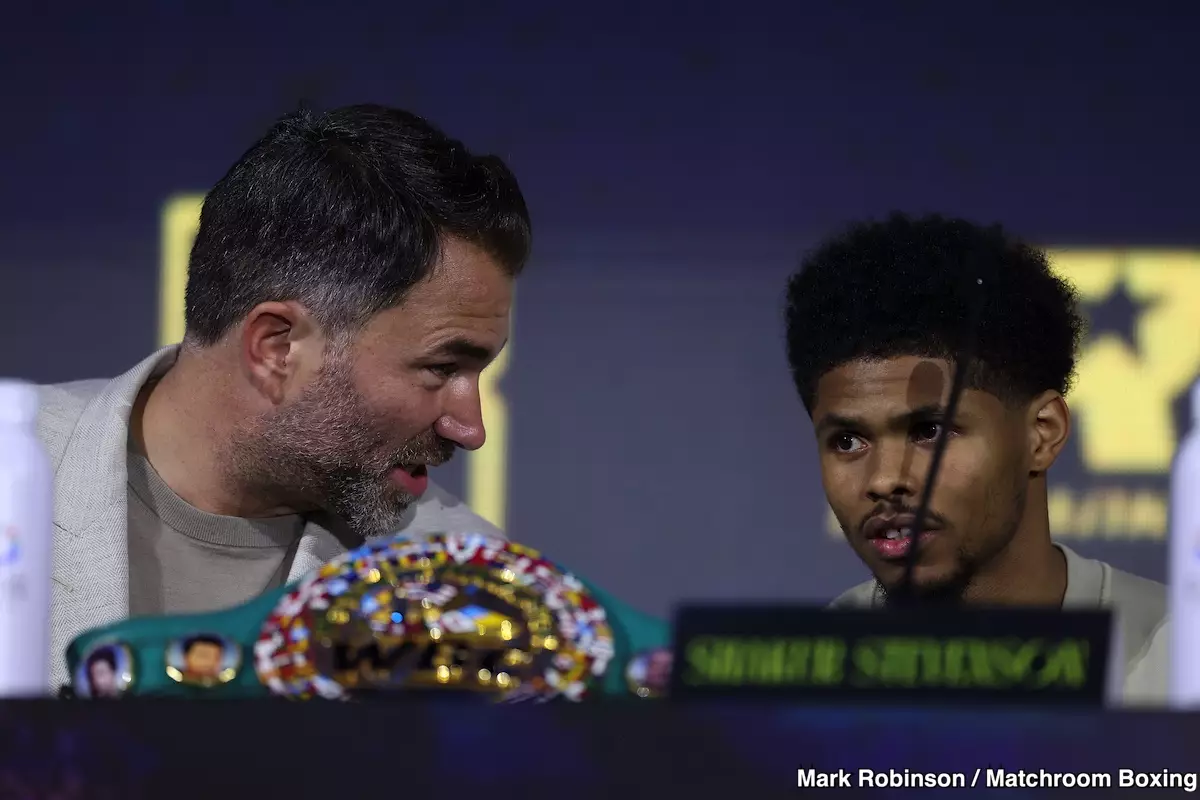In the realm of boxing, comparisons between athletes of different eras can often evoke fervent debates among fans and analysts alike. Recently, promoter Eddie Hearn drew parallels between Shakur Stevenson and the legendary Sugar Ray Leonard during a press conference for Stevenson’s title defense against Josh Padley. While the intent behind Hearn’s statements may be rooted in promoting the sport and its athletes, the comparison itself highlights a myriad of issues related to generational talent, marketability, and the expectations placed on contemporary fighters.
When Hearn praised Stevenson by evoking Leonard’s name, he aimed to position the 27-year-old as a significant figure in modern boxing. However, such comparisons tend to overshadow the nuances of each fighter’s career and life circumstances. Leonard, at the age of 27, was not merely defending titles; he was engaged in high-stakes battles, against contemporaries such as Roberto Duran and Marvin Hagler, that solidified his legacy. By contrast, Stevenson’s path has largely been characterized by a series of less formidable opponents, raising valid questions about the truth behind Hearn’s assertions.
Leonard’s career was marked by a gladiatorial spirit where he relished challenges and sought out the best in the ring. He was never labeled as a mere title holder; rather, he was seen as a warrior with an insatiable appetite for greatness. Stevenson, who boasts an impressive record of 22 wins and 10 knockouts, remains mostly untested against high-caliber opponents in his division. This stark differentiation raises concerns about whether promoters and fans are prematurely elevating the fighter’s status.
One striking aspect of Hearn’s comparison is Shakur’s perceived inability to transcend various weight classes in search of meaningful fights, a move that Leonard would have likely embraced. Rather than showcasing a dynamic approach to competition, Stevenson finds himself contending with replacement opponents like Josh Padley, who holds an undefeated record but lacks the pedigree of those who have truly challenged the best in the sport.
This situation brings forth another point of contention: the victim mentality that often arises in modern boxing. Stevenson has complained about difficulties in securing fights against top-tier contenders in the lightweight division, which paints a picture of a boxer struggling to gain traction in a stacked weight class. Whereas Leonard adapted to challenges and shifted weight classes with seeming ease, this current narrative fosters skepticism regarding Stevenson’s aspirations and commitment to greatness.
Hearn’s praise for Stevenson as one of today’s greatest pound-for-pound fighters begs a critical examination of what that term fundamentally represents. Part of being recognized as a top fighter includes the ability to captivate audiences and generate excitement inside the ring. Leonard’s career was marked by thrilling bouts that left fans eager for more, whereas Stevenson often finds himself embroiled in fights that lack the same energy and dynamism. The contrast becomes even more pronounced when considering the compelling rivalries that defined Leonard’s era.
It’s essential to acknowledge that boxing is not merely a sport of statistics or titles. It thrives on the spectacle of athleticism, strategy, and emotion—a blend that Leonard embodied effortlessly. The current dynamics surrounding Stevenson often feel muted, raising questions about where he fits into the narrative of boxing legends.
As Stevenson prepares for his title defense against Padley, the challenge lies not just in winning the fight but in carving out a legacy worthy of true greatness. Hearn’s comparison to Sugar Ray Leonard, while well-intentioned, may inadvertently cast a shadow over Stevenson’s potential. Whether Stevenson can embrace the demands of competitive spirit, seek out challenges, and stimulate the excitement that boxing demands remains to be seen. In an age where promoting fighters’ greatness is essential, it ultimately falls on the athletes themselves to fulfill these lofty comparisons and reshape the narrative of what it truly means to be great in the boxing world.

